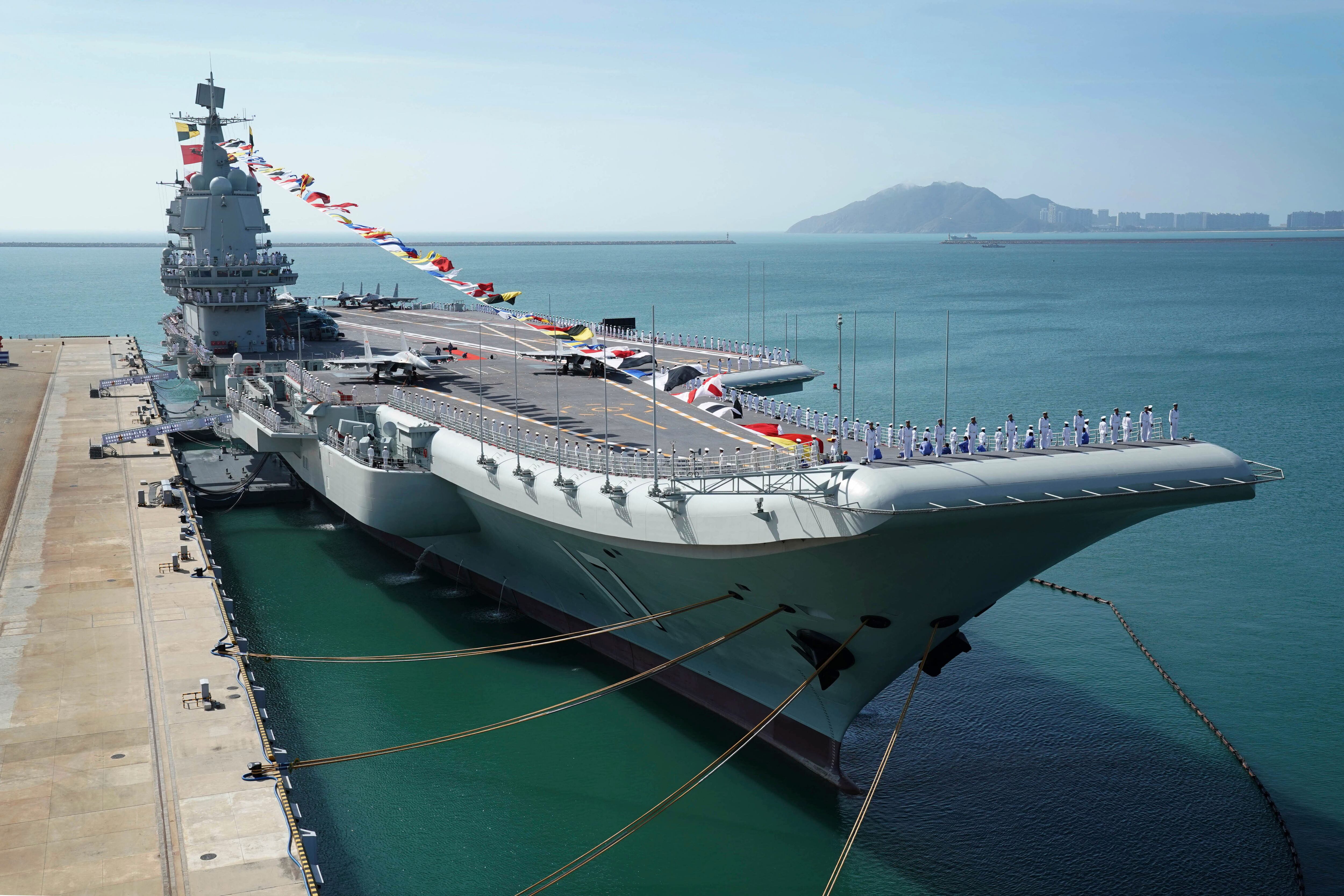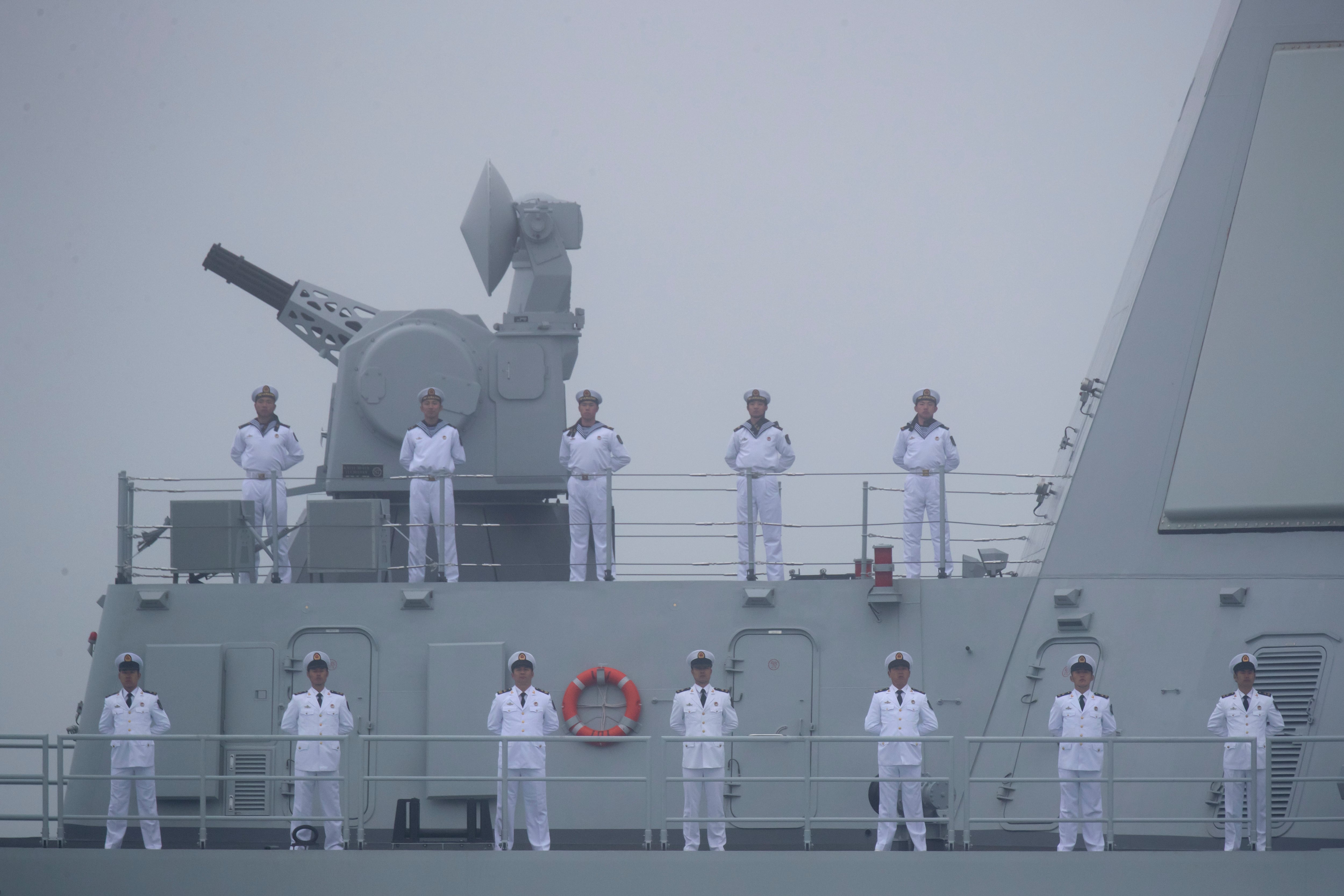MELBOURNE, Australia — China is stepping up its aircraft carrier program on all fronts with the emergence of a stealth fighter mock-up at a naval test facility, suggesting that China intends to operate the type on its ships.
Meanwhile, the construction of China’s third aircraft carrier is making steady progress, while a state media news clip shows carrier-borne fighters have been based at a naval air base, which has been geolocated to a naval air base in Hainan Island bordering the South China Sea.
The latter will be one of the final pieces to the jigsaw for China’s People’s Liberation Army Navy, or PLAN, to base its second aircraft carrier, the Shandong, and its associated air wing at Hainan, the main base of its South Sea Fleet.
A new stealthy carrier-borne fighter?
A photo has recently emerged of the mock-up of what appears to be a stealthy fighter jet at China’s dedicated naval research and testing facility in Wuhan, Hubei province. Though not confirmed, it would seem likely that the mockup is of the Shenyang FC-31.
The FC-31 was originally a privately funded venture by the Shenyang Aircraft Company and not driven by any military requirements. It first flew in 2012 and was marketed for export, although without success. However, rumors persisted that the type was subsequently selected for development into a carrier-borne fighter. In 2016 a new, significantly altered airframe started flight trials.
The design displays a number of stealthy features in the form of stealth shaping, low-observable intakes and an internal weapons bay. The type is a twin-engined, medium-sized fighter, and although the FC-31 does not appear to be at an advanced stage in its development cycle, a mock-up’s appearance at the “flight deck” of the concrete aircraft carrier mockup in Wuhan is significant.
The facility in Wuhan is widely believed to be used for electromagnetic spectrum testing of future PLAN systems, and has been a useful indicator of the PLAN’s plans in the past. Mockups of the Type 002 and 003 aircraft carriers, 055 cruiser, and Shenyang J-15 fighter and Xian KJ-600 airborne early warning aircraft have previously appeared at the site, all of which have since gone into service or continued their development process.
Third carrier construction
The construction of China’s third aircraft carrier at a shipyard at the eastern city of Shanghai is continuing apace, with a steady stream of photos taken from commercial airliners flying to and from the city’s Pudong International Airport appearing on social media sites showing the progress of the work being done on the hull.
RELATED

The photos show that construction of the carrier, which is still known as the Type 003, has reached the flight deck level with the provisions for catapults to launch aircraft clearly visible at the front of the flight deck. Also visible are further flight deck modules yet to be joined with the hull show additional catapult tracks, which will almost certainly be fitted to the angled portion of the flight deck that allows for aircraft launch and recovery to be carried out simultaneously.
The use of catapults would be a first on the PLAN’s carriers, with the previous two ships having an angled ski-jump to launch aircraft. This limited the type of aircraft that can be operated off China’s current aircraft carriers, with heavier and less powerful types like an airborne early warning aircraft not being able to take off using such a method.
An interesting facet of the design that has been picked up on by analysts is that the Type 003 will have two aircraft elevators, both mounted on the starboard side of the ship. The overhead imagery, together with a short video clip taken from the grounds of the shipyard uploaded and then quickly deleted on the social media app TikTok last week, show no provision for an aircraft elevator on the port side.
RELATED

The number of elevators is smaller than that on the U.S. Navy’s Nimitz- and newer Ford-class carriers, which have four and three elevators respectively, although the Type 003′s future carrier air group is projected to be smaller than that of a U.S. Navy carrier’s and closer to that of the French and British navies’ carriers, which also have two elevators each.
The Type 003 is estimated to displace some 85,000 tons to 90,000 tons when complete, and is expected to enter service with the PLAN in 2023.

Carrier-borne fighters to South China Sea base
China’s state broadcaster CCTV showed a segment on the Shenyang J-15 carrier-borne fighter jets conducting training in late May, operating from an unnamed air base that has since been geolocated to Lingshui on China’s Hainan Island in the northern part of the South China Sea.
The segment also show carrier-deck markings painted on the northwestern end of the runway. Satellite imagery taken on Jan. 23 and provided to Defense News by Planet Labs show that similar markings have also been painted on the opposite end of the runway.
The carrier deck markings include helicopter landing spots, and are of a similar configuration to that on the PLAN’s existing aircraft carriers, the Liaoning and Shandong.
The fighters will be housed on 24 fighter-sized aircraft shelters that were constructed at the southeastern end of the base beginning in 2017 and completed in 2020. Two other similar structures, each large enough to hold two fighter jets each, are being constructed at the northwestern end of the base.

The improvements at Lingshui are part of a massive naval infrastructure construction noted on Hainan that has previously been covered by Defense News.
This is the first time that the J-15 has been observed operating from the base, and together with the runway markings further suggests the base has been earmarked to house the J-15s that will be assigned to the PLAN’s second aircraft carrier Shandong, which will also be based at Hainan.
Mike Yeo is the Asia correspondent for Defense News.








